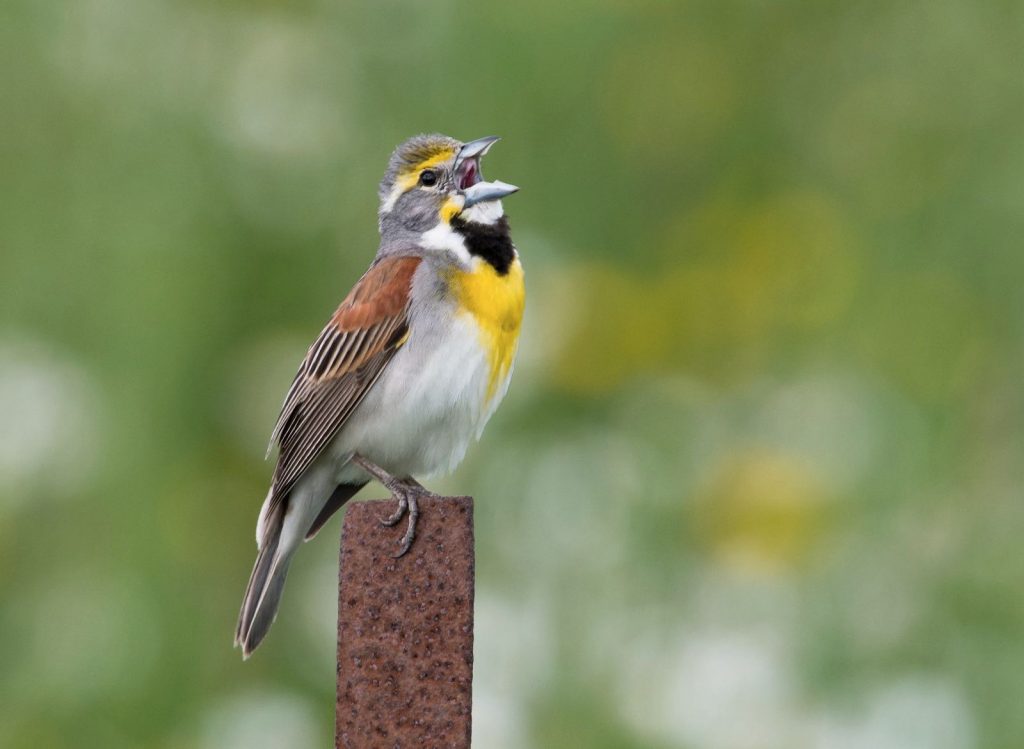In June 2017 numerous observers around the Northeastern US commented that Dickcissels were more obvious, and in greater numbers, than years in recent memory. eBird range maps highlight some of the differences observers were reporting among the last three years, June-July 2015, 2016, and 2017. The animation below begins with June-July 2015, followed by 2016 and 2017. Note the differences from the eastern Great Lakes and New England south through the Appalachians in particular. And also note the variation in the center of this species’ distribution in the Great Plains.
Looking at across a larger sampling of years, we see the pattern is even more striking. Below is a typical BirdCast visual familiar to many. For those that have not seen this type of figure, the white line bounded by black shaded confidence intervals highlights the pattern of the percentage of complete checklists submitted to eBird in the BirdCast Upper Midwest and Northeast region from 1 June to 4 August 2017. Compared to previous years’ observations, which appear in different colors defined by the legend on the right of the figure, 2017 saw a noticeable increase the percentage of checklists reporting the species.

Given the expansion of this species to the east evident from the eBird range maps above during summer 2017, birders in the Upper Midwest and Northeast should keep eyes to the skies for migrant Dickcissels in morning flight and ears open at night for flight calls of passing individuals. Team BirdCast will return to this species, the topic of why this pattern may have occurred (for example, see this), soon!





